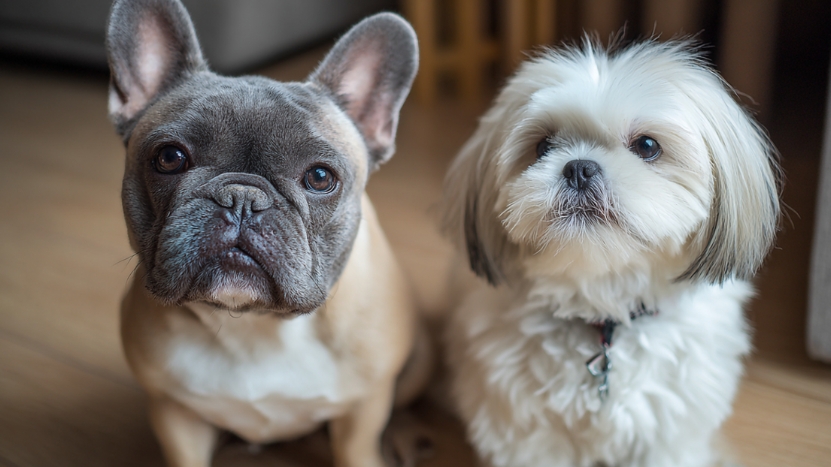If you live in an apartment and are looking for a calm, low-noise companion, the quietest dog breeds are those that tend to bark less, adapt well to small spaces, and are content with moderate activity levels.
Breeds like the Basenji, French Bulldog, and Cavalier King Charles Spaniel consistently rank among the best for apartment dwellers who value peace.
Below, we explore 10 of the quietest dog breeds in detail, each with its own strengths, personality, and practical considerations, all presented with a dedicated table for quick reference.
1. Basenji
| Attribute | Details |
| Height | 16–17 inches (41–43 cm) |
| Weight | 20–25 lbs (9–11 kg) |
| Energy Level | High |
| Barking Tendencies | Extremely low |
| Good with Neighbors | Excellent |
| Grooming Needs | Low (self-cleaning, cat-like) |
| Ideal Owner Type | Active urban dweller |
Basenjis are highly unique in the dog world. Instead of barking, they produce a vocalization that sounds like a mix between a yodel and a whine, commonly referred to as a “baroo.” This is due to the shape of their larynx, not a behavioral trait, so even untrained Basenjis are inherently quiet.
That makes them ideal for apartment buildings where noise complaints can be a problem. However, they’re not low-maintenance across the board.
These dogs are intelligent and independent, often compared to cats in terms of temperament. They can get into mischief when understimulated, which means they need daily exercise and mental challenges like food puzzles or scent games.
Basenjis also keep themselves very clean and have almost no doggy odor, which means you won’t need to bathe them often.
They do shed minimally, but their short, fine coat makes grooming easy. Socialization from an early age is critical because Basenjis are reserved with strangers and may become territorial without early training.
Their high prey drive means you’ll need to leash them outdoors, even in dog parks.
2. French Bulldog
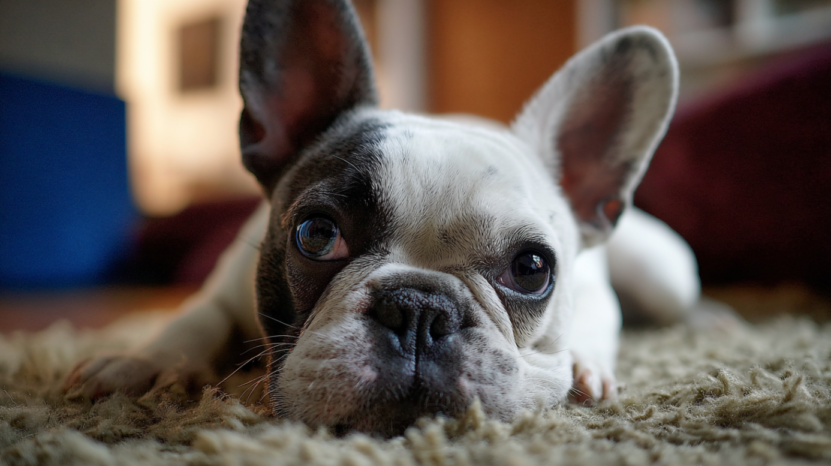
Attribute
Details
Height
11–12 inches (28–31 cm)
Weight
16–28 lbs (7–13 kg)
Energy Level
Low to moderate
Barking Tendencies
Very low
Good with Neighbors
Excellent
Grooming Needs
Low (short coat)
Ideal Owner Type
Laid-back, prefers cuddling to hiking
French Bulldogs are apartment favorites worldwide, not only because of their compact size but because they hardly ever bark without a real reason. Most Frenchies are content to nap through a delivery or ignore distant hallway sounds.
They don’t make great watchdogs, but they’re ideal in buildings with thin walls. While they’re not energetic, French Bulldogs do need light daily walks to manage their weightsomething that’s often overlooked due to their lazy demeanor.
Their flat faces make them prone to overheating and respiratory issues, especially in warmer climates or during summer. This is why apartment living, with controlled indoor temperatures, is ideal for them.
Frenchies also tend to develop strong attachments to their owners, which can sometimes cause separation anxiety. Crate training and slow desensitization to alone time help prevent this.
They don’t require much grooming, but their skin folds need regular cleaning to prevent infection. In general, their calm disposition, low bark rate, and adaptability make them excellent for urban settings.
3. Cavalier King Charles Spaniel
View this post on Instagram
Attribute
Details
Height
12–13 inches (30–33 cm)
Weight
13–18 lbs (6–8 kg)
Energy Level
Moderate
Barking Tendencies
Low
Good with Neighbors
Very friendly
Grooming Needs
Moderate (regular brushing)
Ideal Owner Type
Friendly, social, gentle temperament
Cavaliers have one of the softest temperaments of any toy breed. They rarely bark unless someone is at the door or they’re startled.
This is partly due to their origins, bred purely for companionship and lap-warming in royal courts. These dogs thrive when they’re with their people and don’t do well if left alone for long hours.
While they’re affectionate and gentle, they also enjoy moderate activity, such as short walks, chasing toys in the hallway, or engaging in indoor training games. They do best in apartments where their owner is home often or has a flexible schedule.
Cavaliers have a long, silky coat that needs brushing several times a week, especially around the ears and legs, to avoid mats. Ear infections are common due to their droopy ears, so routine cleaning is needed.
Healthwise, this breed is prone to heart problems (mitral valve disease), so regular vet checkups are essential. In terms of behavior, they’re polite, easy to train, and friendly with other pets and neighbors, making them a perfect dog for community living.
4. Greyhound
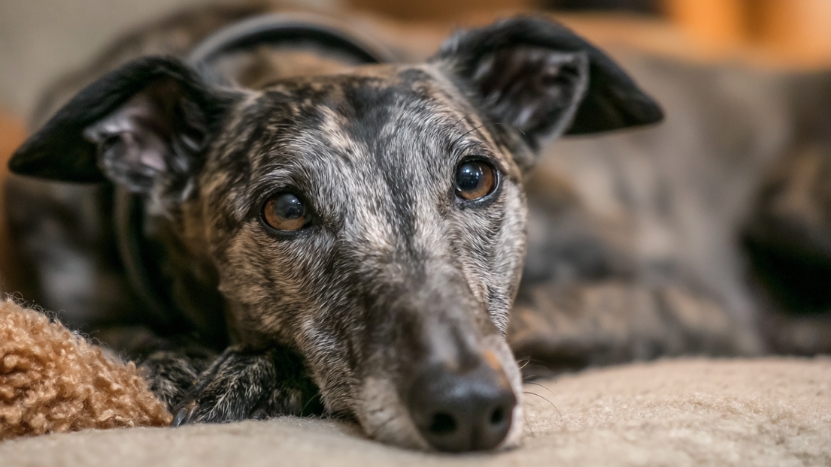
Attribute
Details
Height
25–30 inches (63–76 cm)
Weight
60–70 lbs (27–32 kg)
Energy Level
Low indoors, moderate outdoors
Barking Tendencies
Very low
Good with Neighbors
Excellent, if well socialized
Grooming Needs
Very low
Ideal Owner Type
Quiet, appreciates elegance and calm
Most people associate Greyhounds with speed and energy, but inside the home, they’re one of the calmest, quietest breeds you can adopt. Greyhounds are almost shockingly still when they’re not sprinting. They can spend 20+ hours a day napping if given the chance.
They rarely bark, are not territorial, and have a natural gentleness that makes them unobtrusive indoors. Many Greyhounds available for adoption are retired racers.
These dogs are already crate-trained, leash-trained, and used to a routine, which translates well into apartment life. Despite their size, they’re incredibly good at maneuvering tight spaces and tend to curl up into compact sleeping positions.
They require daily walks, but don’t need a yard and don’t demand fetch games or high-energy play. Greyhounds have extremely low body fat, which means they get cold easily, and most need a dog coat in the winter.
Their short coats also mean they’re low shedders with minimal grooming needs. You’ll rarely find a quieter large breed for an apartment setting.
5. Shih Tzu
@hughtheshihtzu 5 Reasons Why the Shih Tzu is the best dog breed 🐶🐾💅🏻 #shihtzulovers #shihtzusoftiktok ♬ original sound – Hugh the Shih Tzu
Attribute
Details
Height
9–10.5 inches (23–27 cm)
Weight
9–16 lbs (4–7 kg)
Energy Level
Low to moderate
Barking Tendencies
Low
Good with Neighbors
Friendly and calm
Grooming Needs
High (daily brushing if long-coated)
Ideal Owner Type
Enjoys grooming and relaxed routines
Shih Tzus are bred for one job: companionship. They’re indoor dogs by nature and have no interest in patrolling or sounding alarms, which means barking is minimal.
This is not a nervous or high-strung breed. When socialized early and given a predictable daily routine, Shih Tzus become low-energy, content housemates.
They’re alert but not reactive, so they’ll notice outside noise but usually won’t vocalize it unless encouraged. While small, they’re sturdy and handle small apartment spaces well. However, their coat needs real maintenance.
You either have to commit to daily brushing to keep the hair from matting or schedule regular grooming to maintain a puppy cut. Shih Tzus are also prone to tear staining and need regular eye care.
Dental hygiene is a priority with this breed, as they are susceptible to periodontal disease. They don’t need much exercise; short daily walks or some indoor fetch will suffice.
Shih Tzus bond closely with their humans and are a good option for retirees, remote workers, or anyone who’s home most of the day.
6. Whippet
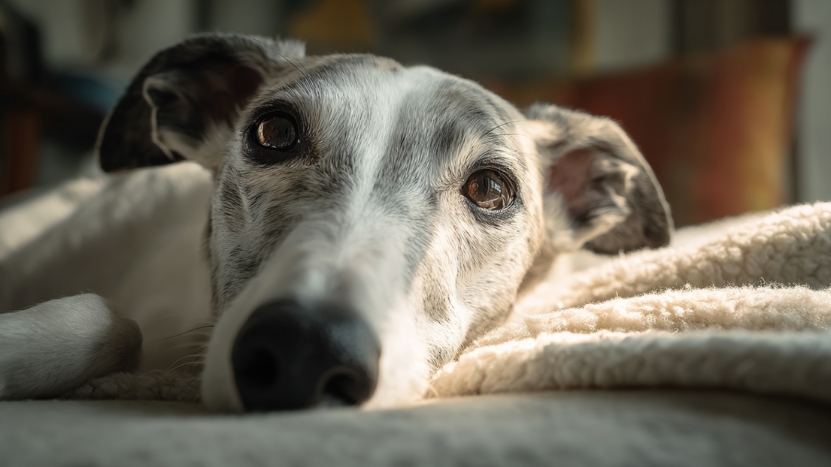
Attribute
Details
Height
18–22 inches (46–56 cm)
Weight
25–40 lbs (11–18 kg)
Energy Level
Moderate (sprints, then rest)
Barking Tendencies
Very low
Good with Neighbors
Very peaceful
Grooming Needs
Very low
Ideal Owner Type
Quiet lifestyle with occasional sprints
Whippets are as gentle in behavior as they are graceful in form. They’re known for being quiet, sensitive, and clean, three traits that make them ideal for apartment life.
Unlike some other breeds, Whippets won’t bark just to express themselves. They are highly people-oriented and prefer human company over that of other animals.
Though fast runners, Whippets are low-energy inside the house. They enjoy a daily burst of activity, such as chasing a ball or running off-leash in a safe area, and then they’re content to rest for hours.
They don’t cope well with rough treatment or chaos, so they’re best in quiet homes without young children. Whippets can be reserved around strangers and don’t have strong guarding instincts, so they’re unlikely to bark at guests or hallway noise.
Their thin coats mean they don’t tolerate cold well and need a warm, draft-free sleeping area. They shed lightly and need very little grooming beyond an occasional brushing.
This breed fits easily into minimalist, peaceful households.
7. Great Dane
| Attribute | Details |
| Height | 28–34 inches (71–86 cm) |
| Weight | 100–200 lbs (45–91 kg) |
| Energy Level | Moderate (short walks are sufficient) |
| Barking Tendencies | Low |
| Good with Neighbors | Calm, if socialized |
| Grooming Needs | Low |
| Ideal Owner Type | Spacious apartment, relaxed schedule |
Despite their intimidating appearance, Great Danes are remarkably docile and quiet. These gentle giants are known for their low bark rate and laid-back temperament.
They rarely react to noises unless something truly unusual happens. When properly trained and socialized, a Great Dane will ignore the elevator, hallway traffic, and doorbells.
The major concern with apartment living is space, not just floor area, but ceiling height, hallway width, and elevator capacity. As long as these are manageable, a Great Dane can adapt surprisingly well to apartment life.
They’re not particularly active indoors and often behave like oversized lap dogs.
You’ll need to account for the cost of feeding and caring for such a large animal; everything from food to vet bills to medications is more expensive.
Danes also have relatively short lifespans and are prone to joint issues, bloat, and heart disease. That said, their quiet and friendly demeanor makes them well-suited to calm homes that can accommodate their size.
8. Japanese Chin
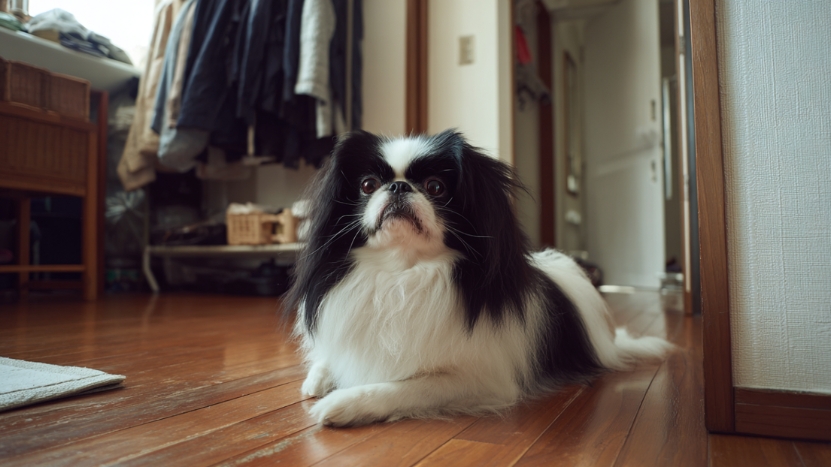
Attribute
Details
Height
8–11 inches (20–28 cm)
Weight
4–9 lbs (2–4 kg)
Energy Level
Low to moderate
Barking Tendencies
Very low
Good with Neighbors
Excellent
Grooming Needs
Moderate (regular brushing)
Ideal Owner Type
Calm, likes small indoor companions
Japanese Chin is an elegant little dogs that carry themselves with dignity and calm. They are highly sensitive to their surroundings and tend to mirror the energy in their environment.
If your apartment is quiet, your Chin will be, too. This breed does not bark excessively. Instead, it uses soft vocalizations or body language to communicate.
Chins prefer to perch on the backs of sofas or windowsills where they can quietly observe the world. They’re not ideal for noisy or chaotic households; they thrive in a calm, predictable routine.
Due to their small size and polite nature, they don’t pose a threat to neighbors or children, though they prefer the company of adults.
They’re also surprisingly agile and can navigate apartment furniture with feline grace. Their coat is soft and feathered, requiring regular brushing but not complicated grooming.
Eye and respiratory issues are common, so indoor air quality and gentle handling are important. Chins are a great match for older individuals or anyone wanting a low-profile companion.
9. Borzoi
View this post on Instagram
Attribute
Details
Height
26–30+ inches (66–76+ cm)
Weight
60–105 lbs (27–48 kg)
Energy Level
Moderate (needs walks, then rests)
Barking Tendencies
Extremely low
Good with Neighbors
Reserved but polite
Grooming Needs
Moderate (long silky coat)
Ideal Owner Type
Appreciates grace and quiet beauty
Borzoi are one of the least vocal breeds in existence. Even under stress, most Borzois will retreat rather than bark or growl. This ancient Russian sighthound is bred for quiet endurance and independence, not for watchdog duties.
Their aloof and regal personality means they often prefer solitude or calm environments. In apartments, they’re almost invisible when indoors, no pacing, barking, or hyperactivity.
However, they do need structured outdoor time to satisfy their need to run and stretch. While not hyper, they require more space than most dogs to maintain health.
If you have access to a dog park or a large open field, even just a few times a week, that’s usually enough.
Indoors, they nap, quietly follow you around, or rest in a sunny spot. Their long coats need brushing a few times a week, especially behind the ears and legs.
Despite their size, Borzois don’t knock things over or charge through rooms; they move with control and awareness, making them surprisingly suited for larger apartment homes.
10. Chinese Crested

Attribute
Details
Height
11–13 inches (28–33 cm)
Weight
8–12 lbs (4–5.5 kg)
Energy Level
Low to moderate
Barking Tendencies
Very low
Good with Neighbors
Friendly and reserved
Grooming Needs
Varies by coat type
Ideal Owner Type
Enjoys quirky breeds and companionship
Chinese Cresteds are one of the most underrated apartment dogs. They come in two types: hairless and powderpuff. Both versions are quiet, people-loving, and unlikely to bark unless genuinely provoked. Cresteds form deep bonds with their humans and follow them from room to room.
They don’t handle being alone for long hours but are otherwise undemanding. Their small size and low energy needs allow them to live happily in compact spaces. Hairless Cresteds need skincare routines to prevent acne or dryness, while powderpuffs require brushing every few days.
Despite their exotic look, Cresteds are playful and affectionate. They’re light eaters, clean, and don’t shed much. Unlike many small breeds, they don’t react strongly to doorbells, footsteps, or other animals unless taught to.
They’re ideal for apartment dwellers who are home often and want a loyal, quiet shadow. Cresteds are also a top choice for allergy-prone owners due to their low-shedding nature, especially in the hairless variety.
Final Thoughts
When choosing a quiet dog breed for apartment life, it’s not just about who barks less; it’s about temperament, adaptability, and compatibility with your lifestyle.
While any dog can be trained to manage barking, these breeds have a natural predisposition toward peacefulness, making them ideal for shared buildings and close neighbors.
Small adjustments – like learning how to cut your energy bill without replacing every appliance – can also make apartment living more efficient and budget-friendly.
Choose the one that best fits your energy level, grooming preferences, and available space, and you’ll have a loyal, quiet friend who keeps your apartment calm and neighbor-approved.

